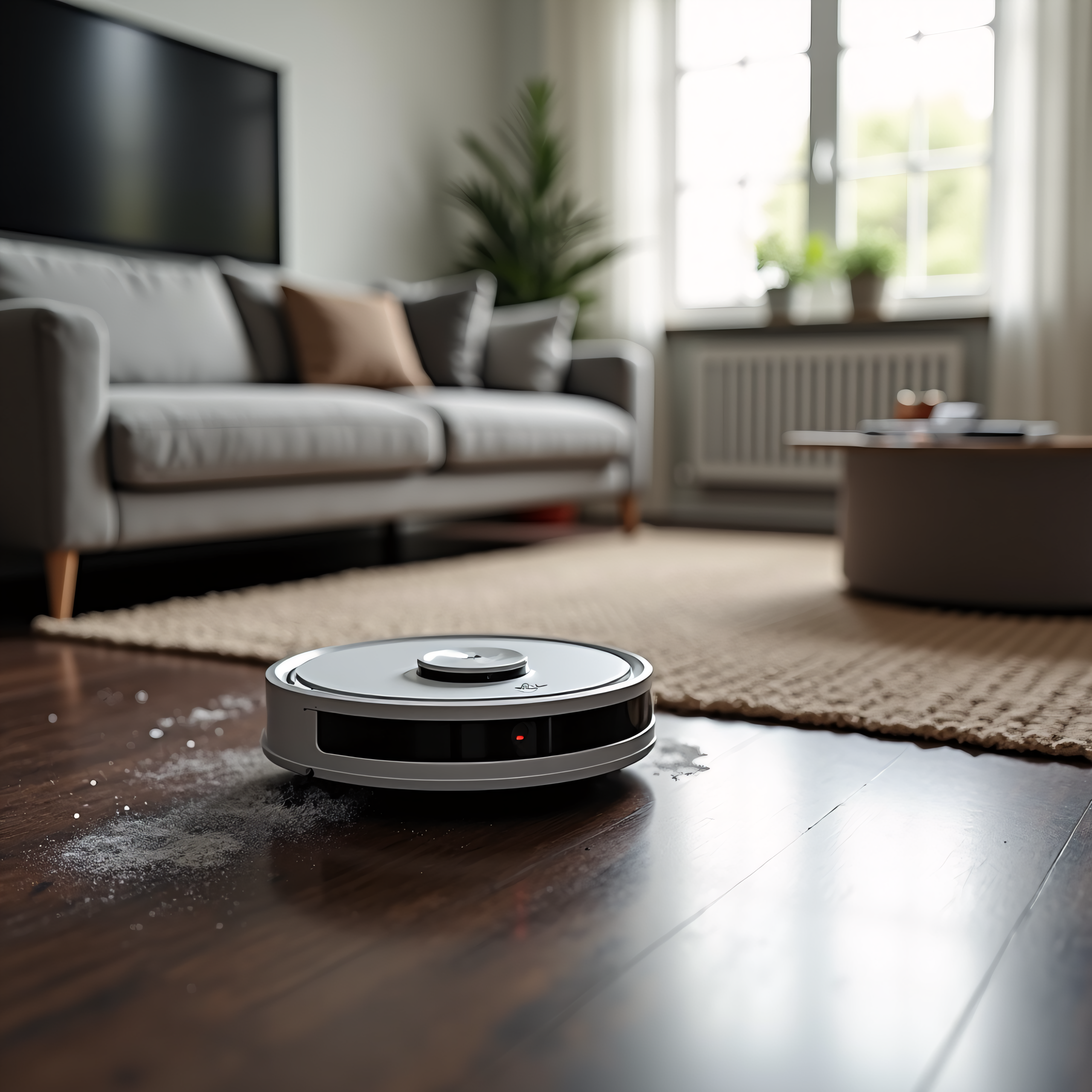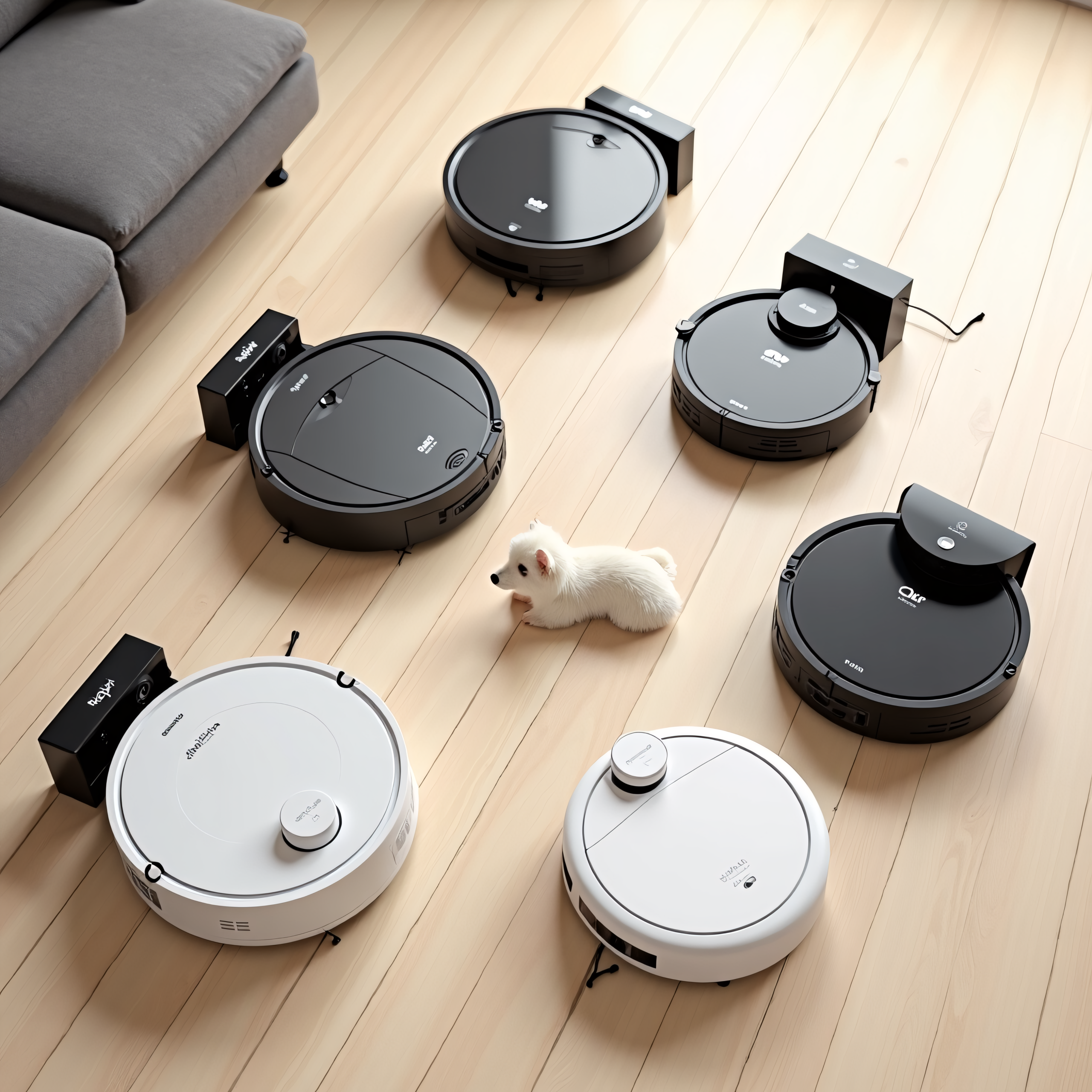estimated reading time: 8 minutes
Decoding the Dirt: A Deep Dive into Roomba Mapping Runs & Models
Let’s start with the brains behind the clean: Roomba mapping runs. Early Roomba models employed a “bump and go” approach, randomly bouncing around your home until they’d covered the area. Modern Roombas, however, leverage sophisticated technologies to create a visual representation of your space, allowing them to clean more efficiently and systematically. The core technology driving this capability is typically vSLAM (Visual Simultaneous Localization and Mapping). vSLAM uses sensors, including cameras and lasers (depending on the model), to simultaneously build a map of the environment and determine the Roomba’s location within that map. Think of it as the Roomba figuring out “where am I?” and “what’s around me?” all at once.
The implementation and sophistication of vSLAM – and thus mapping – vary across different Roomba models. Let’s look at some key differences:
- Roomba i3 & i3+: These models use what iRobot calls “Focused Navigation.” While they do create a basic map, it’s less detailed and primarily used for keeping track of where the Roomba has already cleaned in straight lines. They don’t allow for targeted room cleaning or virtual boundaries. The i3+ adds the convenience of automatic dirt disposal with the Clean Base® Automatic Dirt Disposal system.
- Roomba i4: A step up from the i3, the i4 introduces Imprint™ Smart Mapping. This allows it to learn your home’s layout and create a more detailed map. Crucially, this map unlocks the ability to set Keep Out Zones directly in the iRobot Home app, preventing the Roomba from entering areas like pet food bowls or children’s play areas. It still cleans in straight lines but understands the overall layout of your house.
- Roomba i3+ evo: This newer iteration of the i3+ boasts improved object detection. Utilizing iRobot’s Precision Vision Navigation, it recognizes and avoids common household items like cords, pet waste, and shoes. While still relying on linear cleaning paths, the enhanced detection minimizes interruptions and ensures a more thorough clean. It also retains the automatic dirt disposal of the i3+. Essentially, the ‘evo’ upgrade focuses on what the Roomba sees, not how it maps.
Essentially, the “evo” models prioritize intelligent obstacle avoidance on top of existing mapping capabilities, while the “Imprint” models unlock features based on detailed map creation. Considering needs like these can help you select the right robotic vacuum for your home.
Maximizing Your Roomba’s Performance: Maintenance & Usage
Once you’ve chosen a Roomba, maximizing its performance is essential. This goes beyond simply pressing the “Clean” button. Regularly emptying the dustbin (or ensuring the Clean Base is emptied for i3+/i7/s9 models) is vital. For optimal suction, clean the brushes (brush rollers and edge-sweeping brushes) at least weekly, removing tangled hair and debris. Replacing filters every two months (or more frequently if you have pets) ensures clean air discharge and maintains consistent suction power.
Beyond physical maintenance, leverage the iRobot Home app. Regularly scheduling cleaning runs for times that suit your lifestyle ensures consistent cleanliness. Staying up-to-date with firmware updates is also crucial. iRobot frequently releases updates that improve performance, introduce new features (like improved object recognition), and address potential bugs. The app will notify you when an update is available, and the installation process is usually seamless. The better you maintain your Roomba and utilize its features, the longer it will last, and the better the cleanup will be. Purchasing replacement parts is easy with online retailers.
Troubleshooting Common Roomba Issues
However, even with careful maintenance, issues can arise. A common problem is a Roomba refusing to vacuum. This can often be resolved by checking for obstructions in the brush rollers, a full dustbin, or a clogged filter. The dreaded “**Err5**” error code usually indicates a motor issue and may require professional servicing. Other frequent problems include the Roomba getting stuck under furniture – utilize Keep Out Zones (if your model supports them) to mitigate this. Finally, falling down stairs is a safety concern, especially with models lacking cliff sensors. Always inspect your home for potential hazards before running your Roomba.
If you’re struggling with a specific error code, the iRobot support website provides detailed troubleshooting guides. Don’t hesitate to reach out to their customer service team if you’ve exhausted all other options, especially if it’s a warranty issue.
Finding the Best Roomba Deals
Finally, securing a great deal on a Roomba is possible with a little planning. Black Friday and Cyber Monday consistently offer some of the best discounts, with significant price reductions on many models. Historically (based on past sales data), we’ve seen i3 models discounted by up to 30-40%, while higher-end models like the i7+ and s9+ often see discounts of around 20-30%. Checking retailers like iRobot directly, Amazon, Best Buy, and Walmart is essential during these sales events. Beyond the peak shopping periods, keep an eye on iRobot’s website for refurbished units and seasonal promotions. You can also find great deals on previous generation models which still offer excellent cleaning performance.
More on blog: A Comprehensive Guide to Buying the Right Roomba
Roomba FAQs: Everything You Need to Know
Q: What types of flooring are Roomba robot vacuums best suited for?
Roomba vacuums excel on a variety of hard floors like hardwood, tile, and laminate, as well as low-pile carpets. Higher-pile carpets can be vacuumed, but models with stronger suction (like those in the i7+ or j7+ series) are recommended. Understanding your floor types is key to selecting a Roomba that delivers optimal cleaning performance and avoids getting stuck.
Q: How often should I empty the Roomba’s dustbin (or the Clean Base)?
The frequency of emptying depends on your home size and pet ownership. For smaller homes with minimal pet hair, emptying the Roomba dustbin every 1-2 cleanings may suffice. Those with pets or larger homes, especially those using a Clean Base automatic dirt disposal, will find it fills faster – typically every 2-3 weeks, indicated by a notification in the iRobot Home App.
Q: Does a Roomba replace a traditional vacuum cleaner entirely?
While Roomba robot vacuums are excellent for maintaining daily cleanliness and reducing allergens, they generally don’t completely replace a traditional vacuum. For deep cleaning, tackling large debris, or reaching difficult areas like stairs and upholstery, a traditional upright vacuum is still beneficial. Think of your Roomba as a supplement to, not a substitute for, a full clean.
Q: What is the iRobot Home App and what can I do with it?
The iRobot Home App is central to controlling your Roomba. Beyond simply starting and stopping cleans, it allows for smart mapping (on compatible models), scheduling cleaning schedules, defining Keep Out Zones to avoid sensitive areas, and receiving maintenance reminders. You can also view cleaning reports and customize cleaning settings to personalize your Roomba’s cleaning cycle.
Q: How does Roomba navigation work – what’s the difference between random bounce and vSLAM?
Older Roomba models used a “bounce” navigation pattern. Newer models utilize advanced technologies like vSLAM (Visual Simultaneous Localization and Mapping) and Imprint™ Smart Navigation. vSLAM uses cameras and sensors to learn your home’s layout, creating a smart map for efficient, methodical cleaning. This leads to better coverage and reduced cleaning time compared to random patterns.
more on blog: A Model-by-Model Guide to Navigation & Smart Features
Q: What kind of maintenance does a Roomba require?
Regular Roomba maintenance is crucial for longevity. This includes emptying the dustbin/Clean Base, cleaning the filters (replace every 2-3 months), detangling brushes (removing hair/debris), and wiping sensors. Occasionally checking and replacing the side brush is also advisable. Proper maintenance ensures optimal suction power and continues effective cleaning performance. Accessorizing with replacement parts can be seamless.
Q: Are Roomba robot vacuums good for pet owners?
Absolutely! Many Roomba models, particularly those with rubber brushes (like the i7+ and j7+), are specifically designed for pet hair removal. The tangle-free brushes minimize hair wrapping, and powerful suction lifts even embedded pet dander. The frequent cleaning provided by a Roomba helps keep pet allergies under control and maintains a cleaner home environment.
more on blog: iRobot Roomba i7+, j7+, and Roborock S7 Compared
Reclaim Your Time: The Future of Floor Cleaning is Here
So, we’ve journeyed through the world of Roomba robotic vacuum cleaners, unpacking the intricacies of their mapping technology – from the foundational vSLAM to the nuanced differences between models like the i3, i3+, i4, and the evolved i3+ evo. We’ve tackled common frustrations, offering solutions for everything from a Roomba refusing to vacuum to the dreaded Err5 error, and outlined how consistent maintenance, smart scheduling, and regular firmware updates can unlock peak performance. And, of course, we’ve explored strategies for snagging a great deal, especially around key sales events like Black Friday and Cyber Monday.
Ultimately, the Roomba isn’t just about automating a chore; it’s about reclaiming your time and enjoying a consistently cleaner home with minimal effort. Whether you’re a first-time buyer overwhelmed by options or a current owner looking to optimize your experience, understanding these key aspects is crucial.
But the evolution doesn’t stop here. We’re already seeing trends towards even more intelligent cleaning – expect advancements in object recognition (avoiding pet toys and cords!), more personalized cleaning zones, and potentially even integration with broader smart home ecosystems. The future likely holds robotic mops combining with vacuuming capabilities, and even more sophisticated self-emptying base stations. Staying informed about these developments will ensure you continue to get the most out of your robotic cleaning companion.
More on blog:


